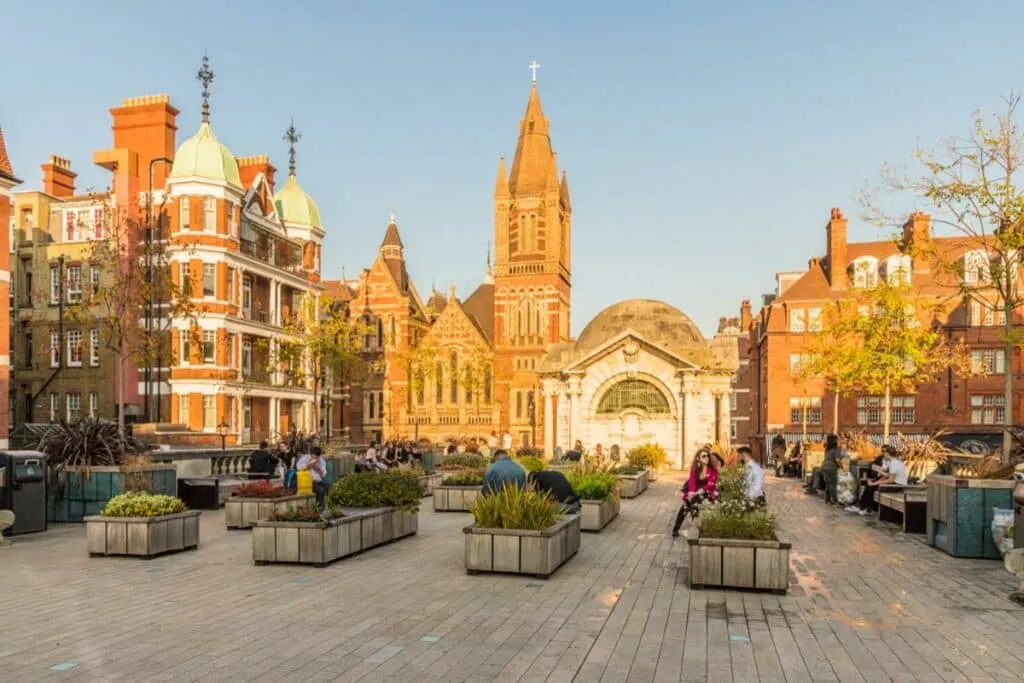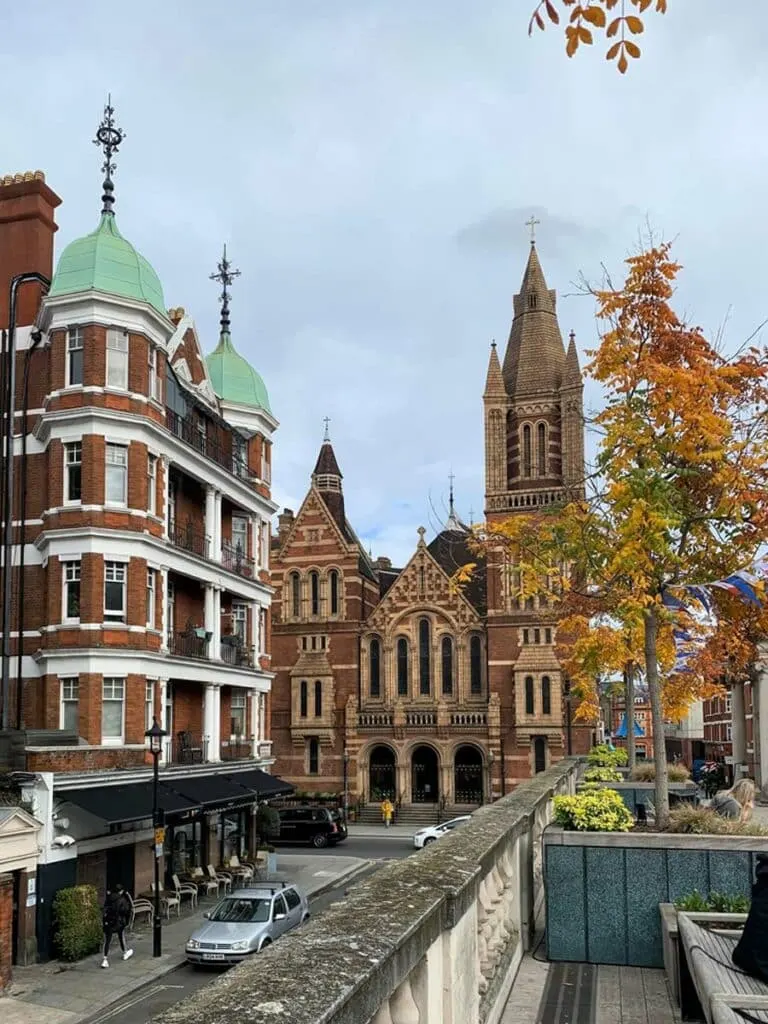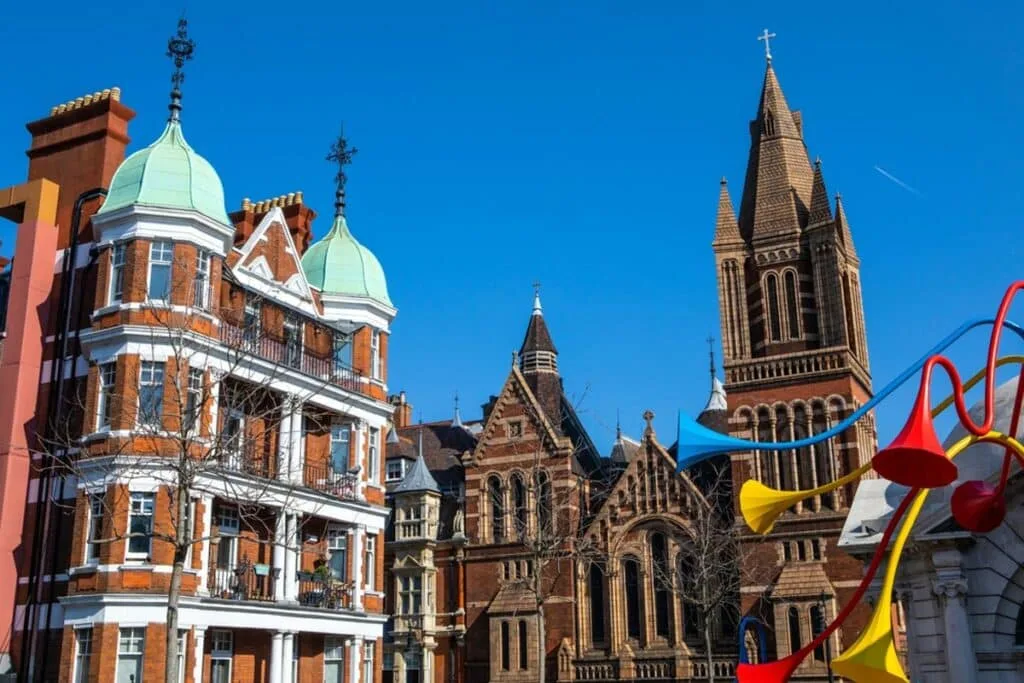Hidden in plain sight, one of London’s most beautiful gardens sits bang in the middle of London’s exclusive Mayfair. Let’s explore.
Words by John Rogers
If you didn’t know its whereabouts, you’d easily miss Brown Hart Gardens. A stunning oasis of scenery set among the opulence of Mayfair and within a stone’s through of the chaotic brutality of Oxford Street.
One of London’s more unusual spots, here’s why Brown Hart Gardens is a must-visit next time you’re in London.
Why You Should Visit Brown Hart Gardens
Brown Hart Gardens is a raised terraced garden south of Oxford Street set in among the decadent streets of London’s exclusive Mayfair district.
In 2013, the gardens underwent a facelift as part of a wider area regeneration, turning the spot into a stunning visitor attraction off the beaten tourist track.
A Brand New Design

This 2013 overhaul was no simple paint job – designers were tasked with resurfacing the original deck with Villebois Limestone and an improved drainage system.
An Andrew Ewing-designed water feature was installed in one of the original stone seats, while the garden’s foliage was replanted entirely around the garden’s perimeter.
The perimeter also contains power units and lights illuminating the deck beautifully after dark, while the new planting schemes allow seasonal flowers and plumage to flourish all year round.
As part of the plans, a brand-new 50-seater cafe was installed at the western end of the gardens, the design deliberately blending into the existing landscape of the garden. Almost fully glazed, the windows can slide back during warmer months while providing warmth during autumn and winter.
A Serene Space
The garden fulfils the remit owner Grovesnor set by improving the public realm across Mayfair and Belgravia, providing a richer living, working, and visitor experience.
They’ve done a great job with the gardens, which give a sense of calm and peace in the often-exhausting world of London.
Beware, though, the Grosvenor Estate rules state that “no idle or disorderly person, or person in an intoxicated, unclean or verminous condition is allowed in the garden.”
In addition, “games, quarrelling, shouting, singing and the practice of gymnastics are prohibited on penalty of prosecution.”
The History of Brown Hart Gardens

Let’s dive into Brown Hart Gardens’ fascinating history…
Duke Street Gardens
The original gardens were known as the Duke Street Gardens, a communal garden that was provided for (what was then) working-class houses in Brown Street and Hart Street towards the end of the 19th Century.
Duke Street Gardens served as a communal space for relaxation for residents of the blocks that rose in the area between 1886 and 1892.
They were built on land owned by the Duke of Westminster, who kept rents low to enable working-class tenants to continue to inhabit the dwellings. In all, around 2,000 people settled on the Grosvenor estate.
Completed in 1889, the initial garden design failed to capture the imagination of the locals. Residents avoided the gardens at all costs, claiming they attracted “disorderly boys” and “verminous women.” Whether the two sides of this same coin intermingled isn’t known.
Duke Street Substation and Rooftop Garden
In 1902, the gardens were removed to make way for the Duke Street Electricity Substation, completed three years later in a Baroque style designed by Charles Stanley Peach.
The design incorporated a domed pavilion with steps at either end, Diocletian windows to light the galleries of the engine rooms, and a balustrade (a fancy railing, in case you were wondering).
By way of compensation to local residents, who all of a sudden began to complain about the loss of the original gardens, the Duke of Westminster insisted that an Italian garden be placed on top of the substation.
The original design saw a largely paved garden featuring trees in tubs, and it opened to the public in 1906.
The gardens remained open to the public until the 1980s as an ornamental garden until the 1980s when the London Electricity Board controversially closed it down.
Before then, ownership of the surrounding buildings transferred to the Peabody Trust, London’s largest housing association.
Refurbishing and Reopening

Plans were announced in 2007 to redevelop the site, with public access granted again in October of that year after being closed for more than 20 years.
Five years later, plans for further redevelopment funded by Grosvenor Britain and Ireland were approved, necessitating the site’s closure. With the refurbishment overseen by architectural consultancy BDP, the gardens were extensively updated to their current guise with the inclusion of the new Garden Cafe.
In June 2013, the gardens reopened to the public with more than sixty uniquely designed seating and plant areas.
Now open to those that behave themselves by following the rules set by the Grosvenor Estate (remember those pesky rules we discussed earlier?), we can’t recommend a few hours in this oasis highly enough.
Just make sure you’ve had a shower and aren’t tempted to cartwheel through the grounds while you’re there.
Brown Hart Gardens: Practical Information
Brown Hart Gardens is located just south of the western end of Oxford Street. The nearest stations are Bond Street and Marble Arch.
Address: Brown Hart Gardens, London, W1K 6WP
Opening Times: Daily: 8 am to 8 pm
Ticket Cost: Free

